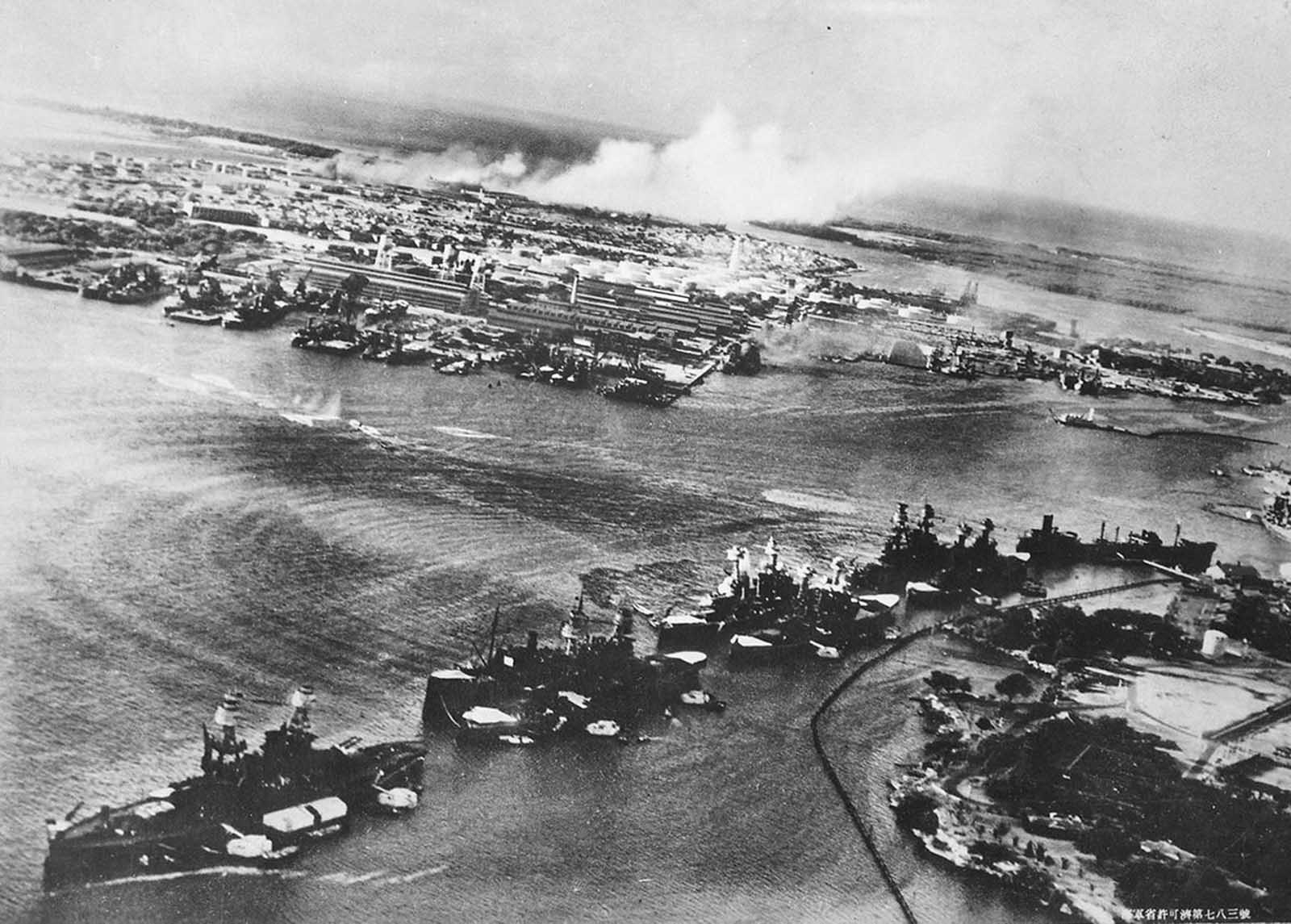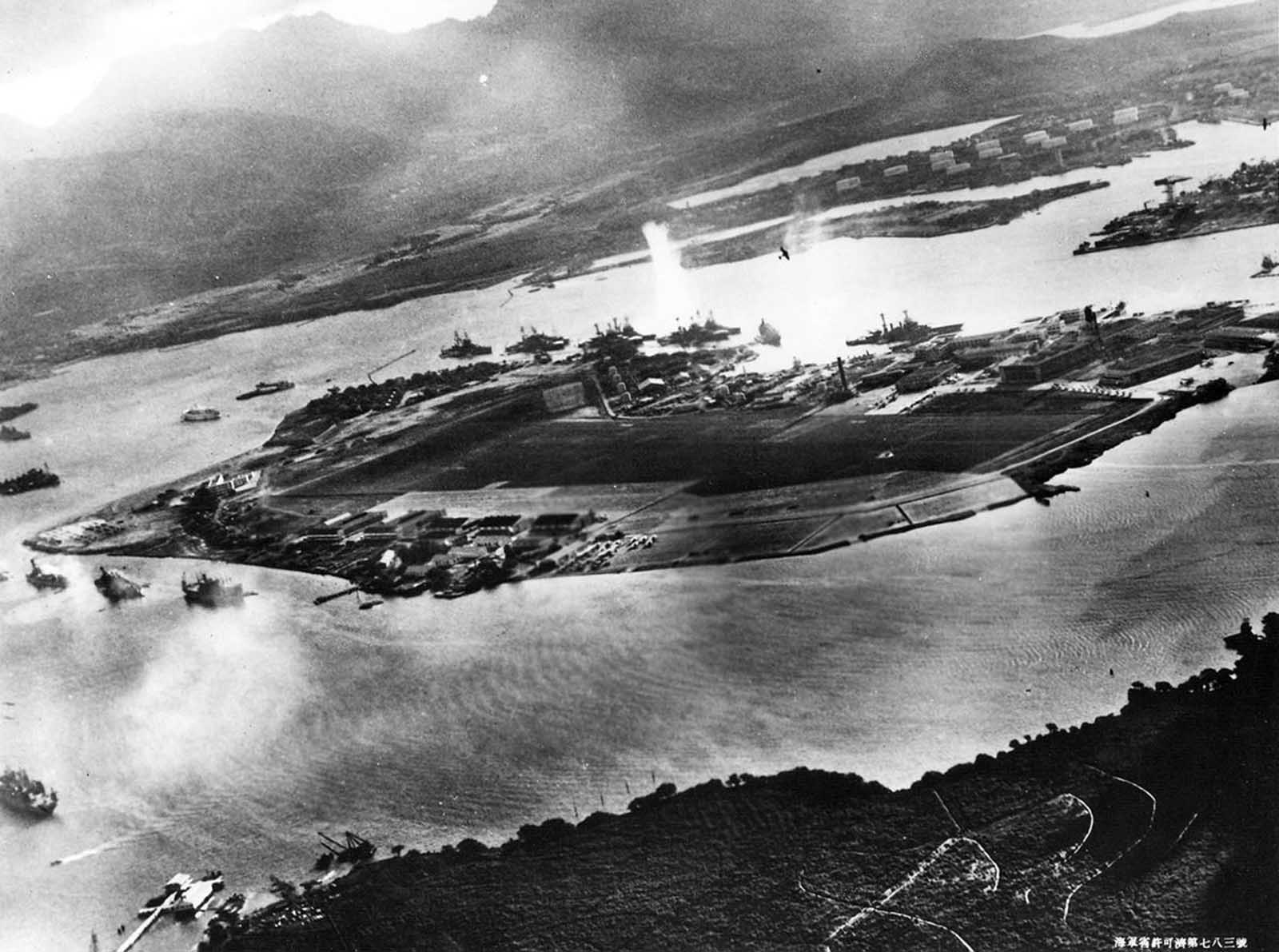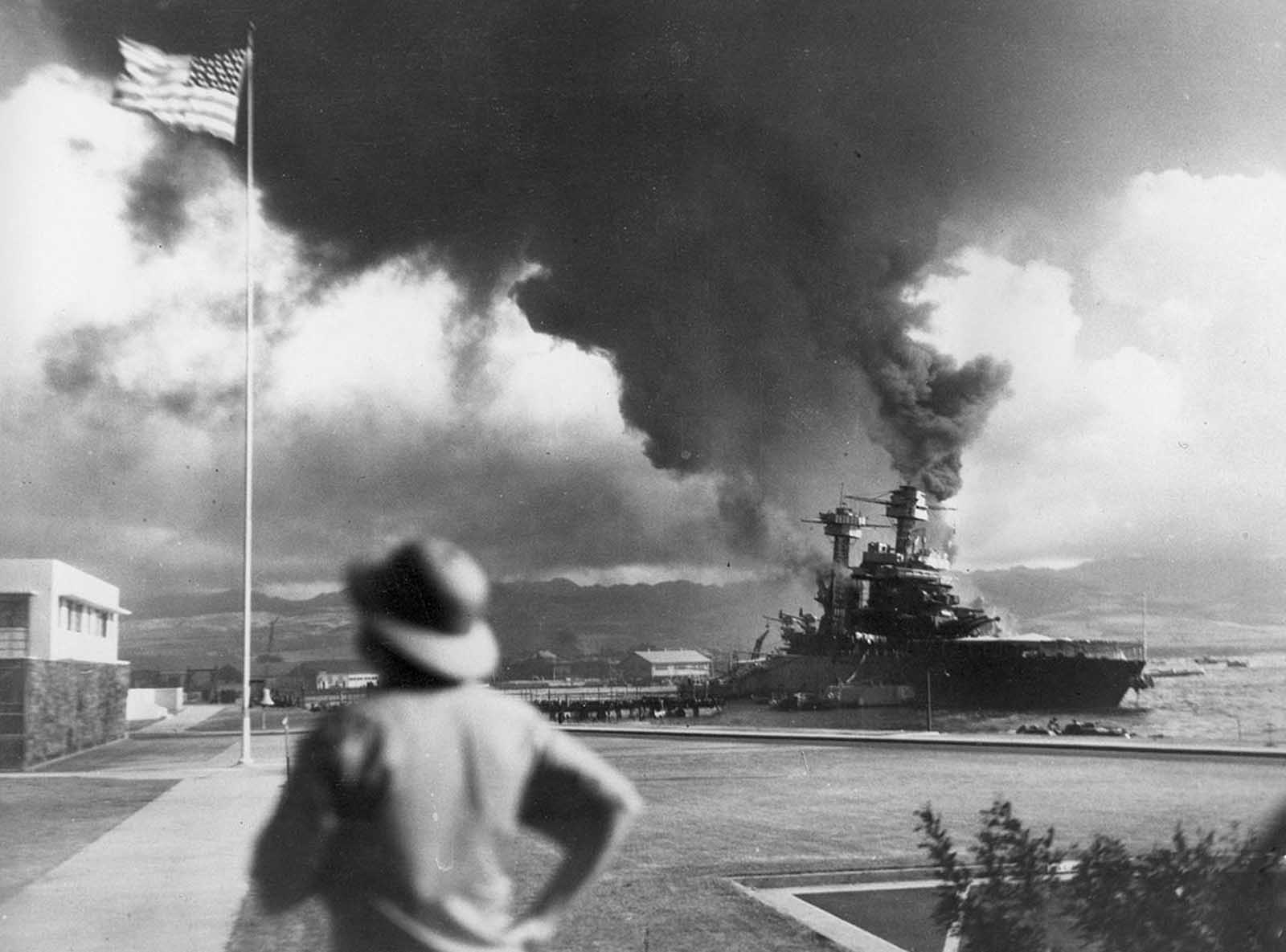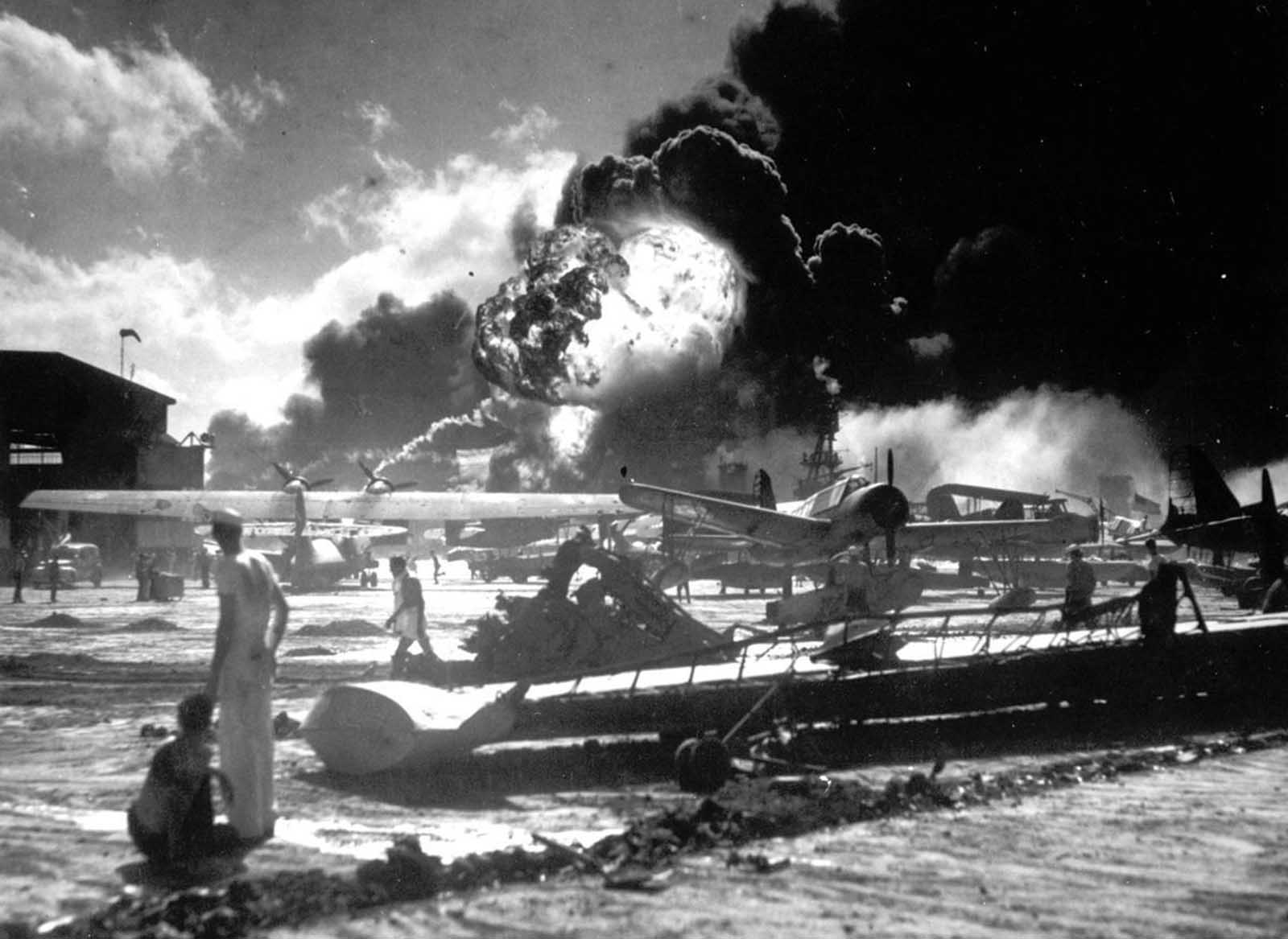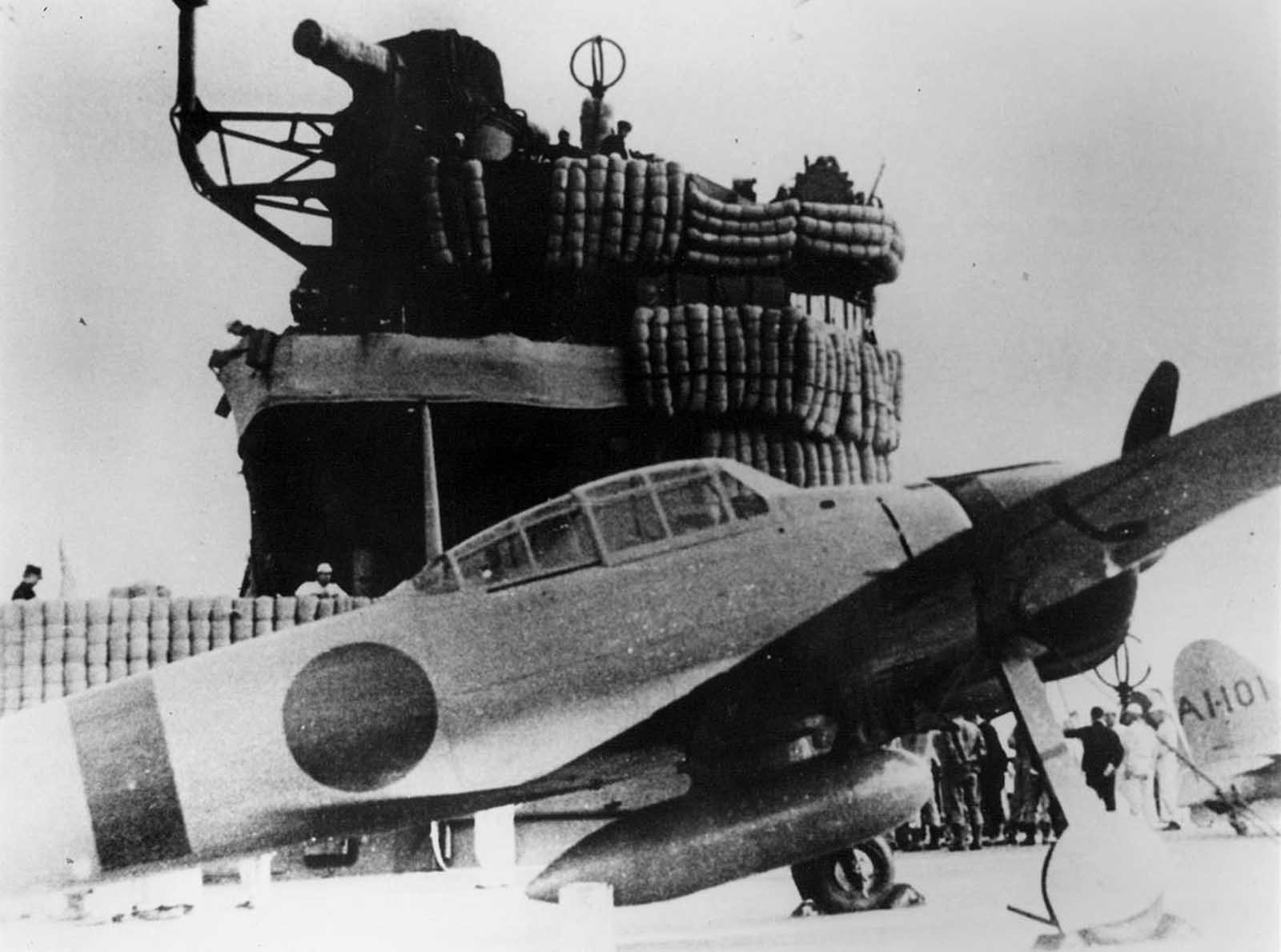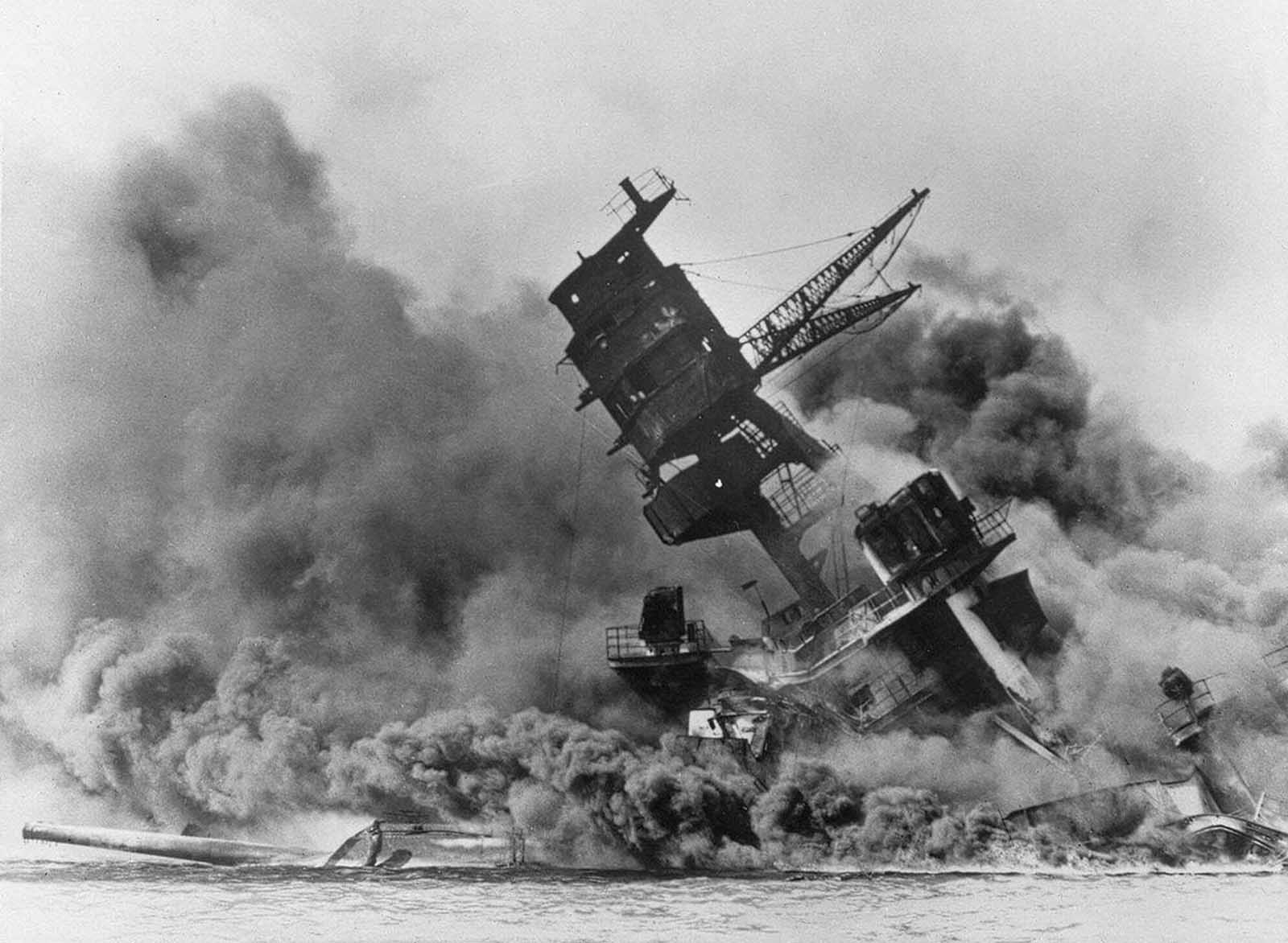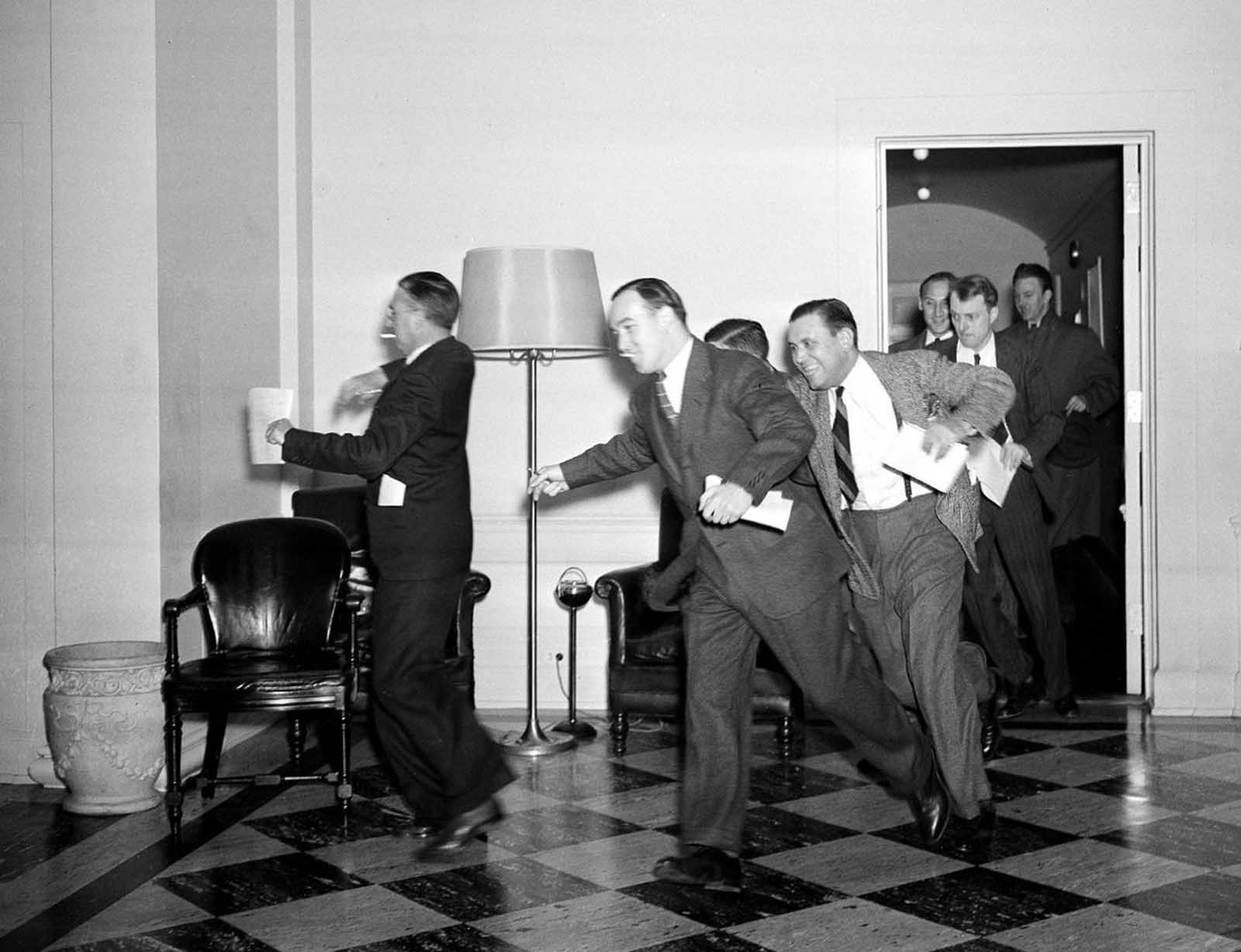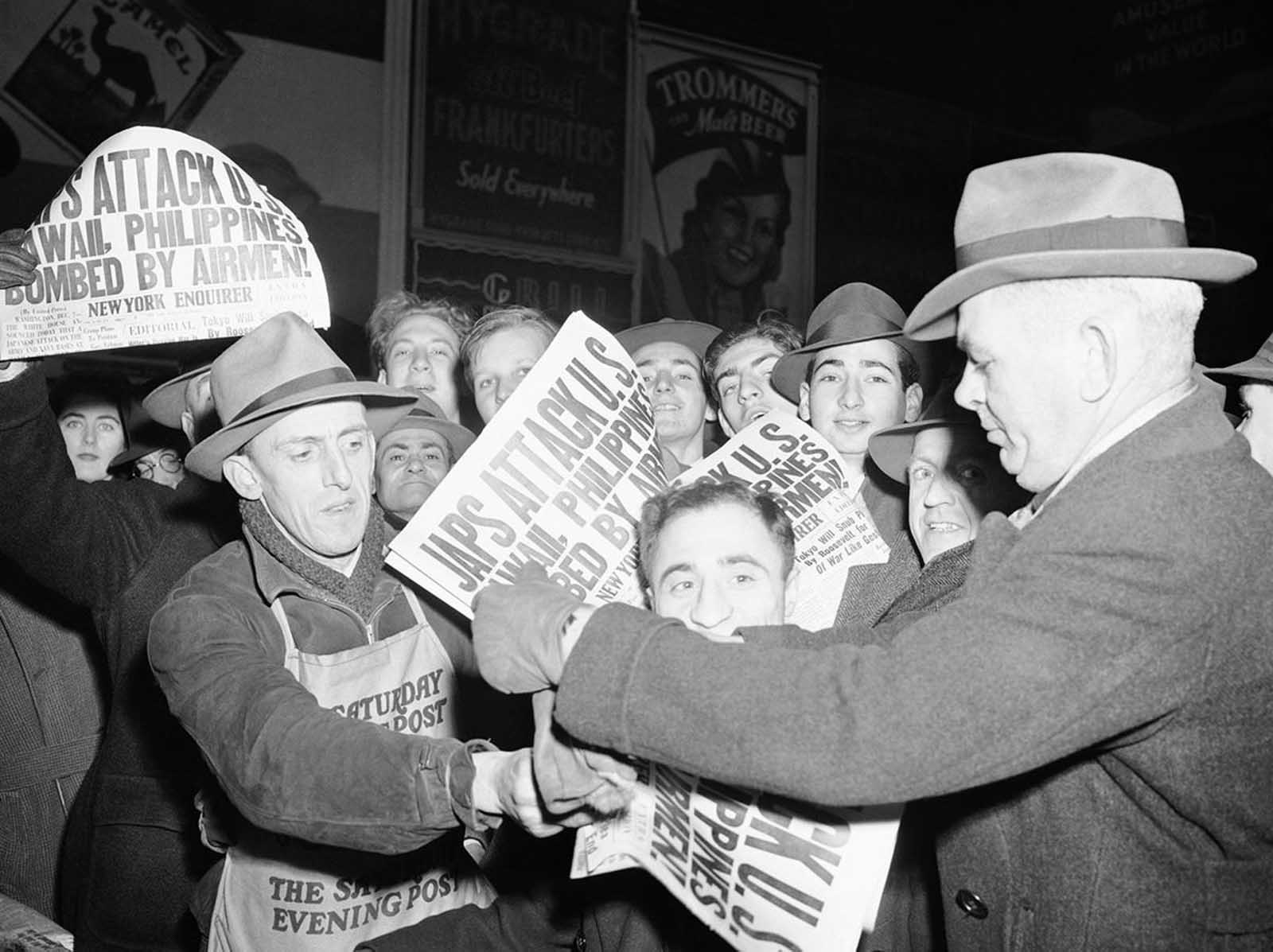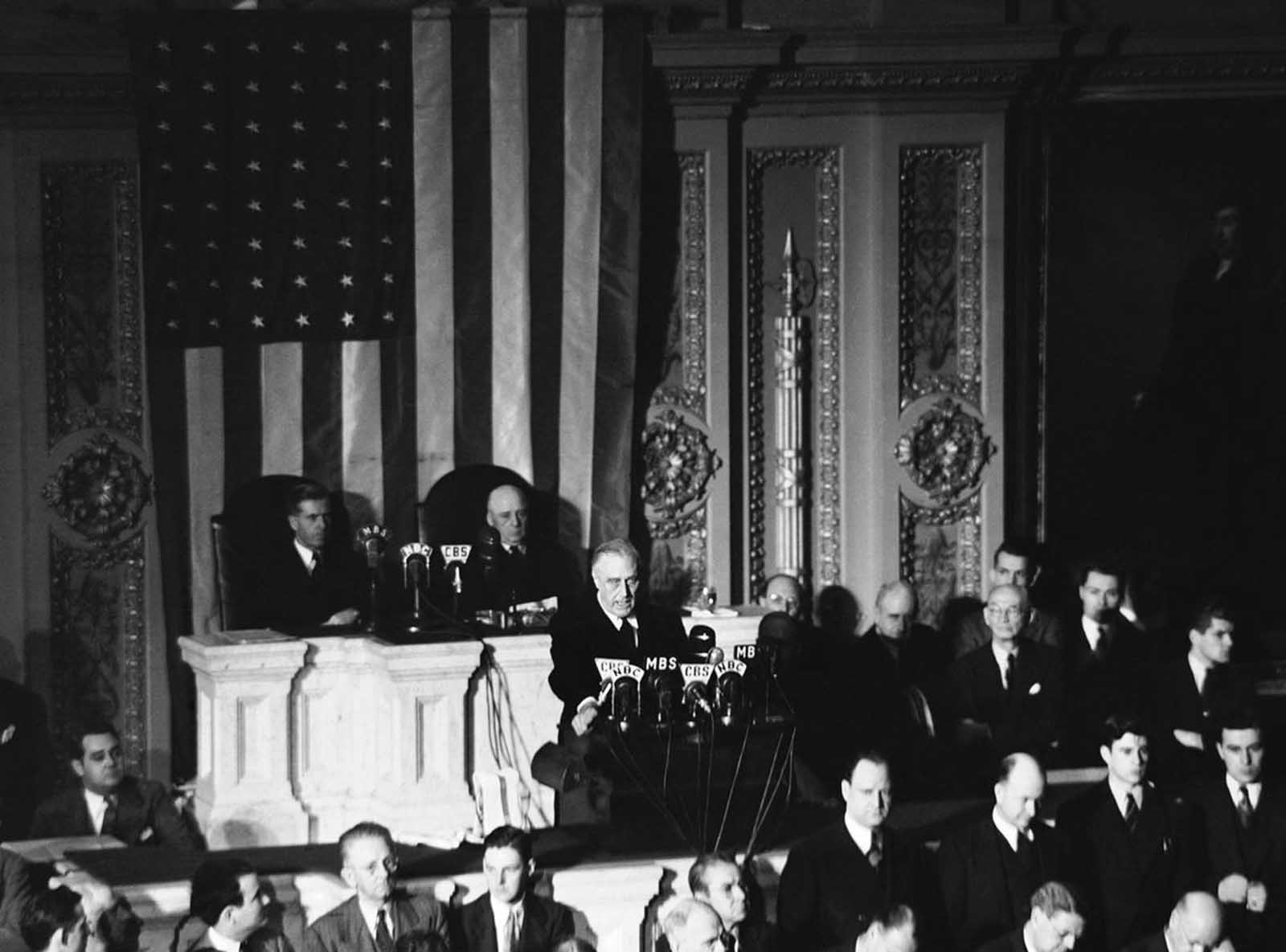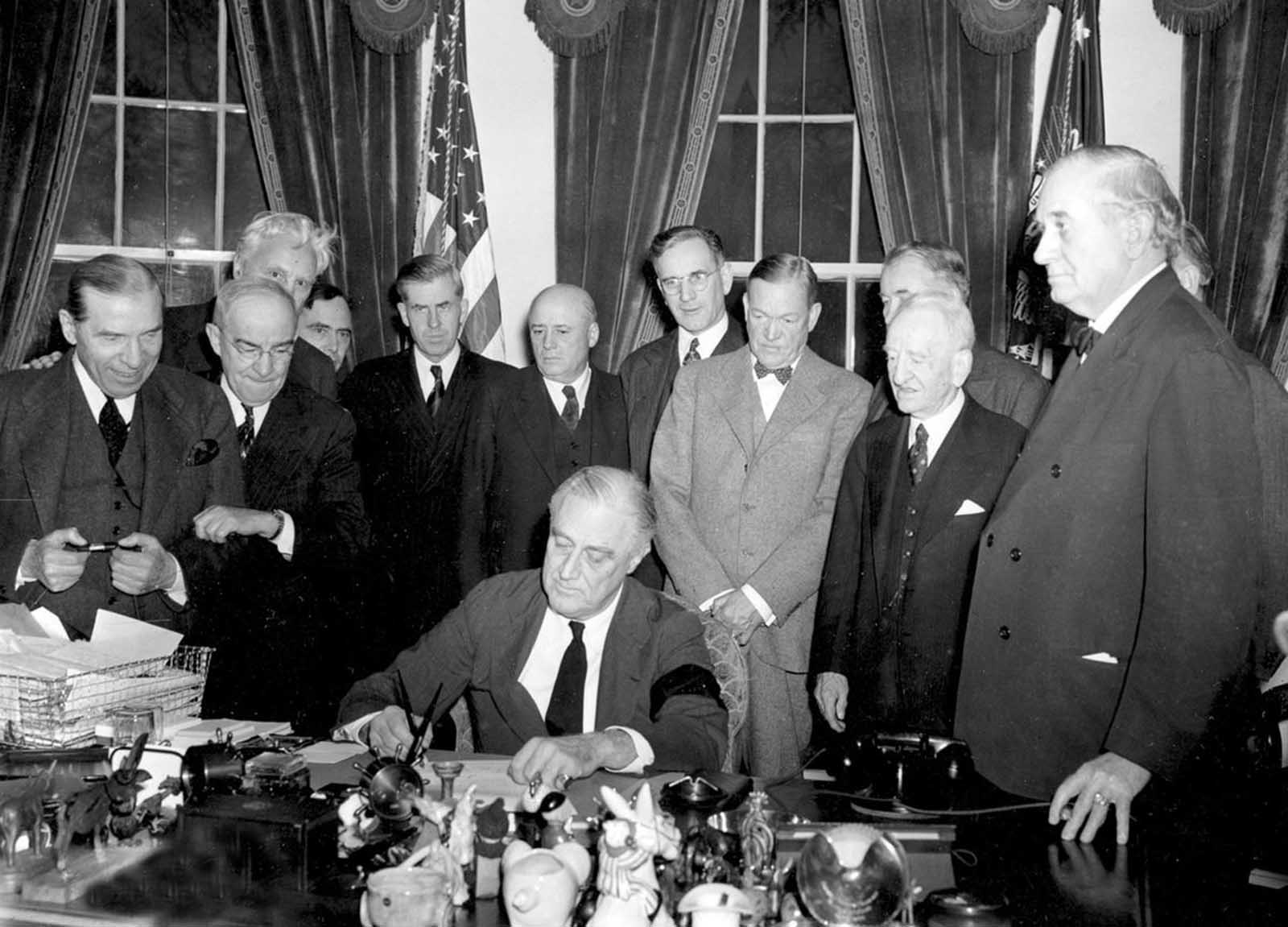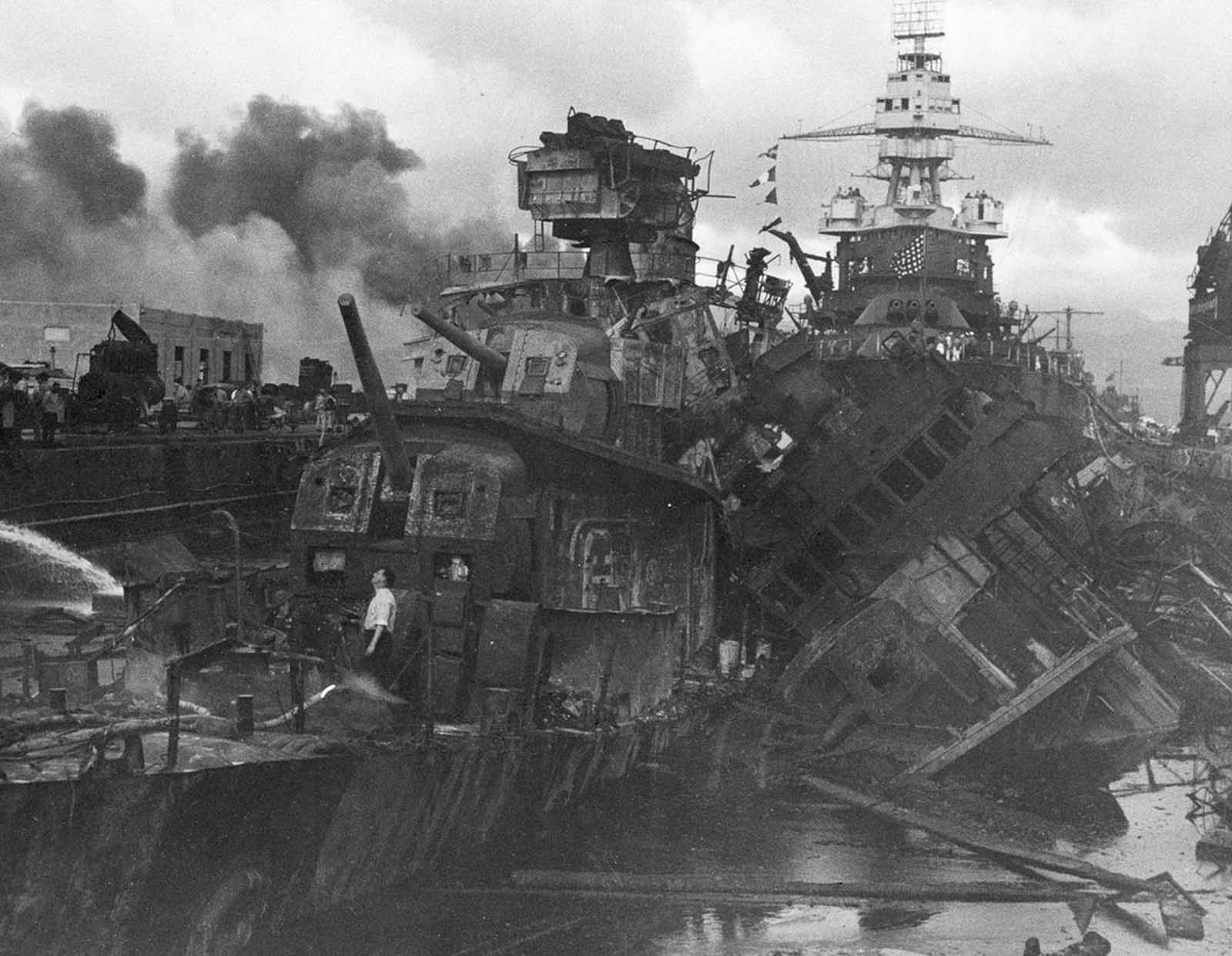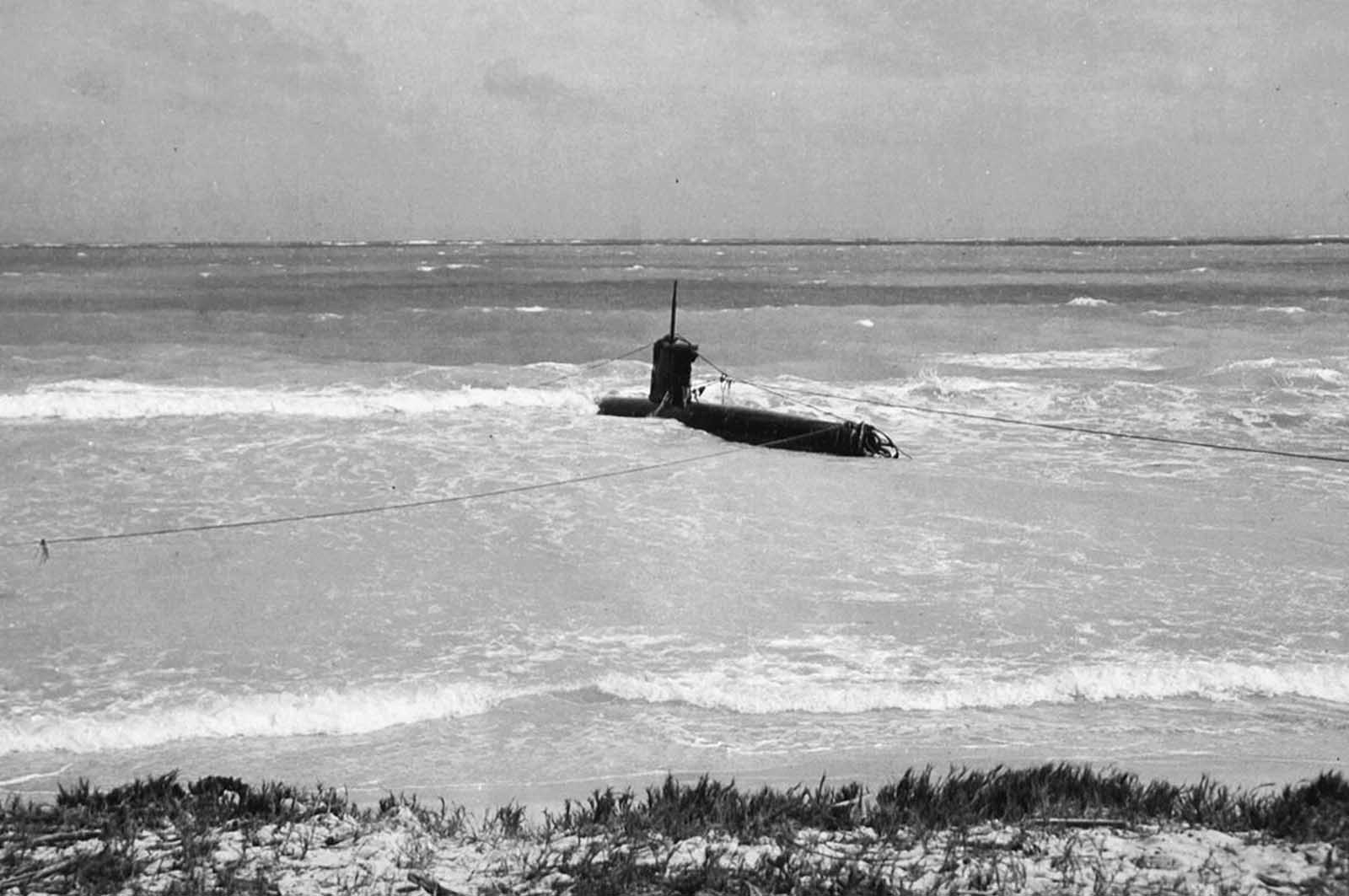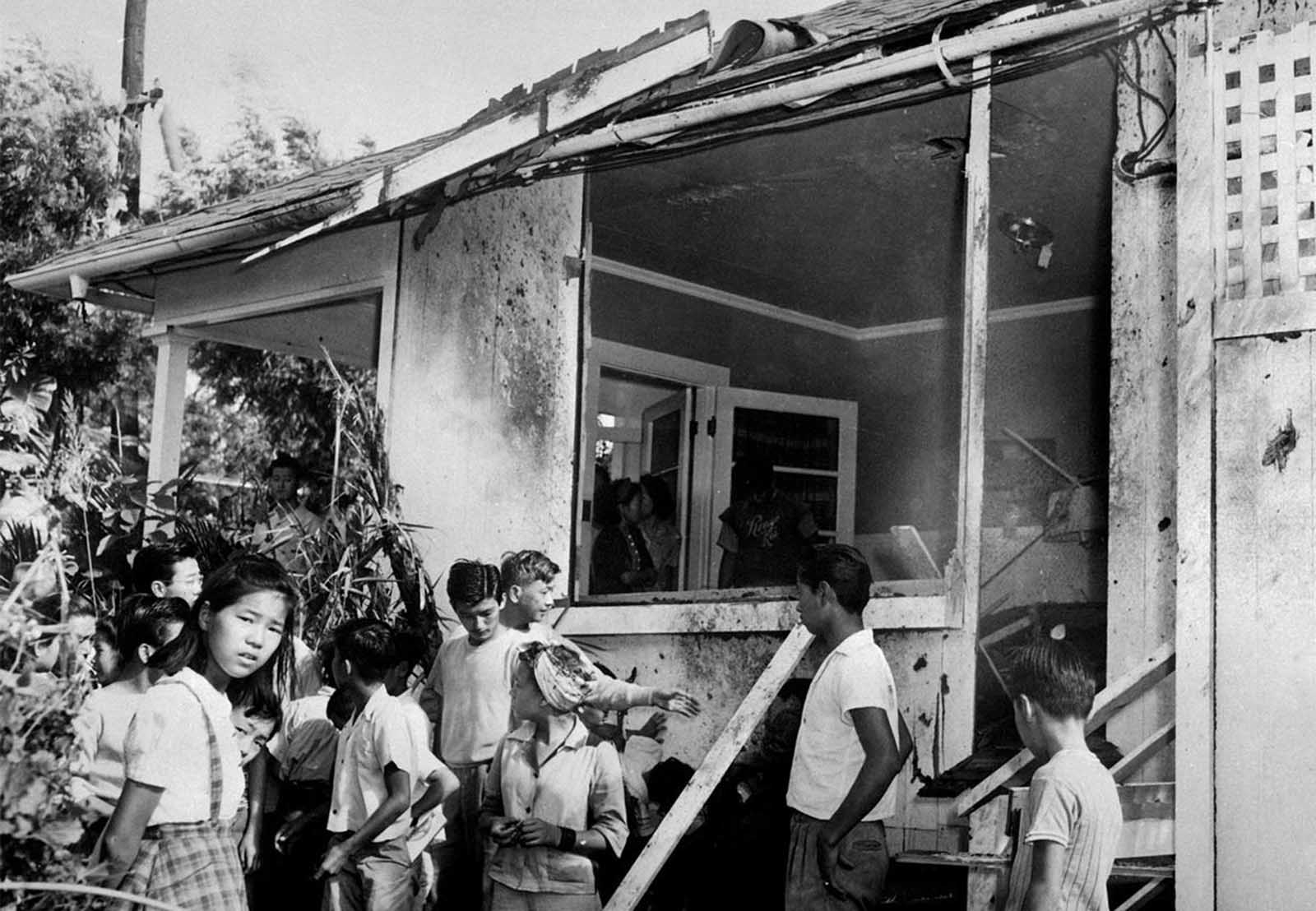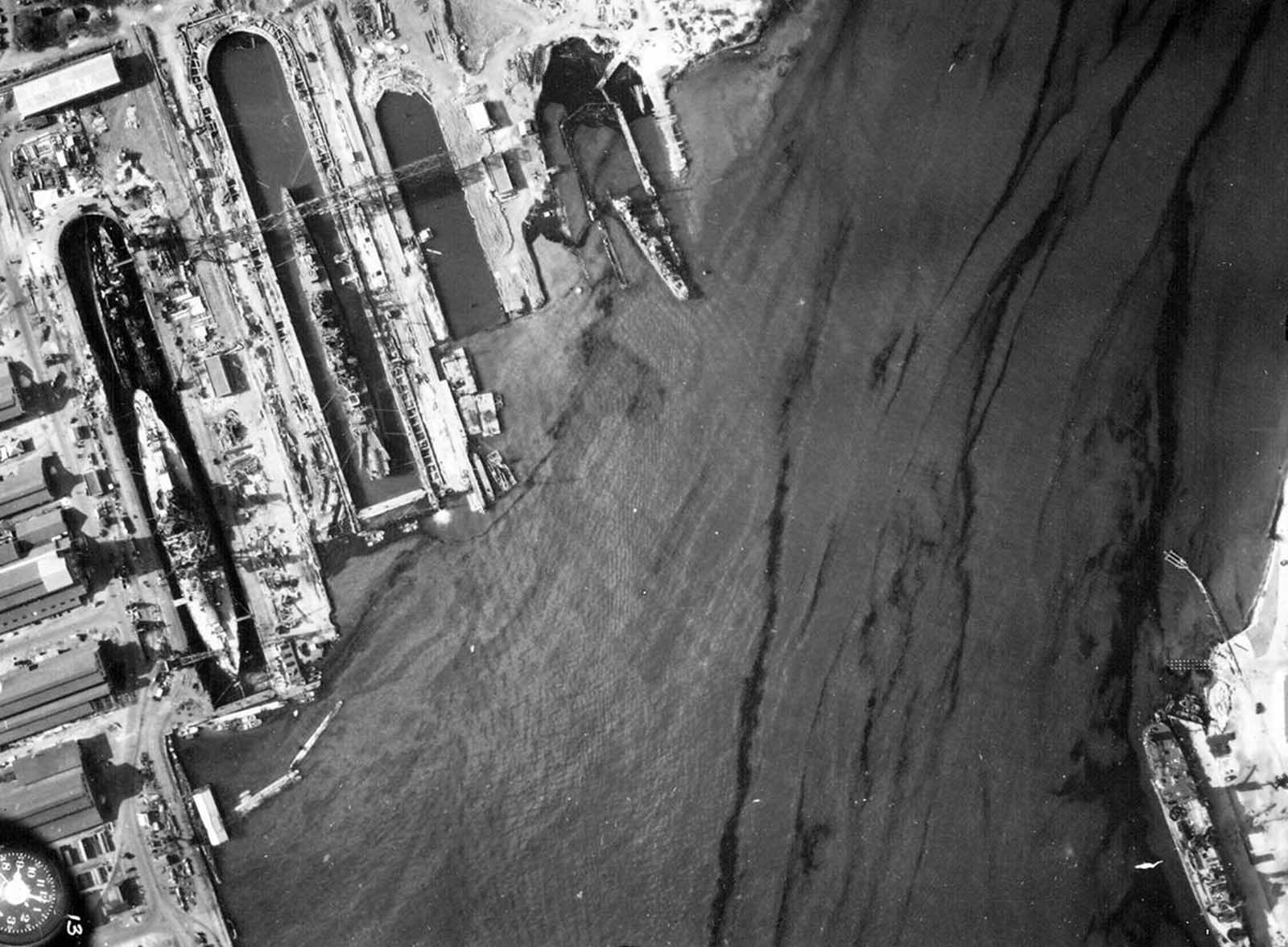Japanese forces wreaked havoc on US naval vessels and on US aircraft on the island’s airfield. In all, 2,403 Americans, including 68 civilians, died in the attack. In comparison, Japan suffered relatively light causalities—it lost only 29 aircraft and a few mini-submarines. The American people were shocked, bewildered, surprised, and angered by the attack. On December 8, President Roosevelt addressed a joint session of Congress in the Capitol, his words broadcast on radio to the nation: “Yesterday, December 7, 1941—a date which will live in infamy—the United States of America was suddenly and deliberately attacked by naval and air forces of the Empire of Japan”. In his address, Roosevelt asked Congress to declare war against Japan, which it did that day. Three days later, Japan’s allies Germany and Italy declared war on the United States, and Congress reciprocated the same day. All previous domestic opposition to US entry into the war ceased. The United States was now immersed in a war it would conduct simultaneously in Europe and the Pacific. The Japanese government decided to attack Pearl Harbor after the United States cut off US oil exports to Japan in the summer of 1941. Japan relied on the United States for eighty percent of its oil, and without US oil supplies its navy would be unable to function. In attacking Pearl Harbor the Japanese hoped to cripple or destroy the US Pacific fleet so that the Japanese navy would have free reign in the Pacific. Japan was also motivated strategically by ideas of creating an Asian co-prosperity sphere—“Asia for Asians”—in which Japan would take over the Asian colonial holdings of Europe and the United States. With the British, French, and Dutch caught up in the war in Europe, the Japanese believed the European powers would be unable to defend their Asian colonial holdings. Indeed, in the eight hours following the Pearl Harbor attack, Japan also attacked British-held Singapore, Hong Kong, and Malaya, and the US territorial possessions of the Philippines, Guam, and Wake Island. While the attack accomplished its intended objective, it turned out to be largely unnecessary. Unbeknownst to Yamamoto, who conceived the original plan, the U.S. Navy had decided as far back as 1935 to abandon ‘charging’ across the Pacific towards the Philippines in response to an outbreak of war. The U.S. instead adopted “Plan Dog” in 1940, which emphasized keeping the IJN out of the eastern Pacific and away from the shipping lanes to Australia, while the U.S. concentrated on defeating Nazi Germany. Fortunately for the United States, the American aircraft carriers were untouched by the Japanese attack; otherwise the Pacific Fleet’s ability to conduct offensive operations would have been crippled for a year or more (given no diversions from the Atlantic Fleet). As it was, the elimination of the battleships left the U.S. Navy with no choice but to rely on its aircraft carriers and submarines—the very weapons with which the U.S. Navy halted and eventually reversed the Japanese advance. While six of the eight battleships were repaired and returned to service, their relatively low speed and high fuel consumption limited their deployment, and they served mainly in shore bombardment roles (their only major action being the Battle of Surigao Strait in October 1944). A major flaw of Japanese strategic thinking was a belief that the ultimate Pacific battle would be fought by battleships, in keeping with the doctrine of Captain Alfred Thayer Mahan. As a result, Yamamoto (and his successors) hoarded battleships for a “decisive battle” that never happened. (Photo credit: U.S. Navy / AP Photo / Library of Congress). Notify me of new posts by email.
Δ Subscribe






